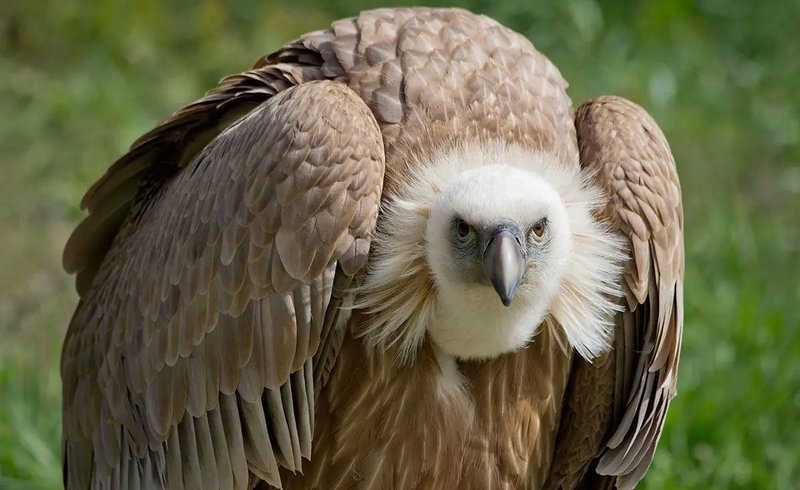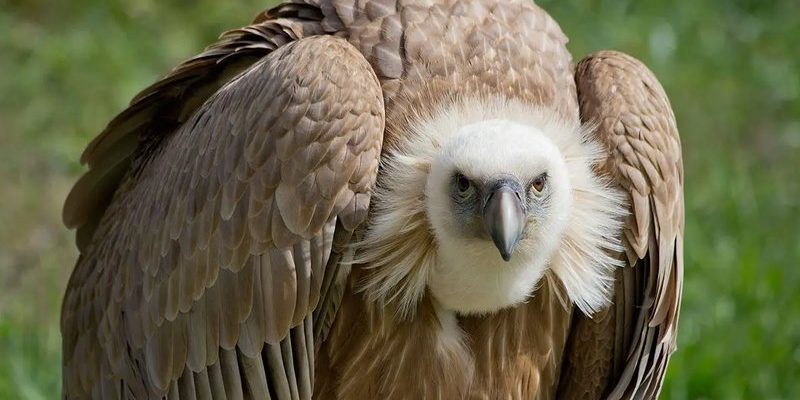
Think of the griffon vulture as nature’s clean-up crew. Just as a janitor tidies up after a big party, these birds help keep the environment healthy by consuming dead animals. You might be surprised to learn just how vital they are. Let’s dive into some common myths that surround the griffon vulture, busting them one by one.
Myth 1: Griffon Vultures Are Scavengers Only
One of the biggest myths about griffon vultures is that they’re exclusively scavengers. Yes, they do eat carrion, but that doesn’t mean they’re lazy or just waiting around for something to die. Here’s the thing: griffon vultures are skilled flyers and can soar for hours, using thermal currents to find food. They often locate carcasses from great heights, scanning the landscape below.
That said, they also play a crucial role in maintaining ecological balance. By eating dead animals, they prevent the spread of disease. If you think about it, it’s a bit like a natural recycling system. If left unchecked, dead animals can attract pests and cause health problems for other wildlife and humans alike.
Myth 2: Griffon Vultures Are Dangerous to Livestock
You might be wondering if griffon vultures pose a threat to livestock. After all, they’re often depicted as menacing in popular culture. However, this couldn’t be further from the truth. Griffon vultures are not predators; they do not hunt live animals. Instead, they rely on the remains of dead animals for food.
This myth often stems from misunderstanding their feeding habits. Farmers may see vultures around their livestock and assume they’re up to no good. In reality, these birds are doing a service by cleaning up any remains of animals that have already died. So, rather than being a threat, griffon vultures are more like silent guardians, ensuring that farms and pastures remain clean.
Myth 3: Griffon Vultures Are Unclean Birds
When you picture a vulture, you might envision a dirty bird circling a carcass. But here’s a fun fact: griffon vultures are actually quite clean! They regularly preen their feathers to keep them in top condition. This grooming helps remove parasites and keeps their plumage aerodynamic for flying.
Additionally, their feeding habits contribute to cleanliness in nature. By eating decaying matter, they help prevent the spread of bacteria and other harmful microorganisms. You can think of them as nature’s sanitation workers, keeping the environment clean and healthy.
Myth 4: Griffon Vultures Are Lonely Creatures
Another common misconception is that griffon vultures are solitary birds. While you might catch sight of one soaring alone, they are often social creatures that thrive in flocks. These birds communicate and work together when finding food. When a carcass is discovered, multiple vultures may gather to feed. It’s like having a big family dinner, where everyone shares the meal together.
Their social structure is fascinating. They have a hierarchy, with dominant birds feeding first. This social behavior is essential for their survival, as they rely on one another to locate food and keep watch for potential dangers in their environment.
Myth 5: Griffon Vultures Are a Threat to Humans
It’s understandable that some might fear vultures, seeing them as a symbol of death and decay. However, griffon vultures are not a threat to humans. In fact, they prefer to stay away from people. They’re more focused on their role in the ecosystem than on interacting with us.
If you encounter a griffon vulture in the wild, it’s likely just as curious about you as you are about it. They’re largely non-aggressive and will fly away if you get too close. So, the next time you see one, remember that they’re just doing their job—acting as nature’s recyclers without any intention of causing harm.
Why Understanding These Myths Matters
Understanding the truths behind these myths can lead to better conservation efforts for griffon vultures. They’re facing significant threats from habitat loss and poisoning, and many people don’t realize how essential they are to our ecosystems. By busting these myths, we can foster a more positive view of these incredible birds, encouraging people to support their protection.
As we learn more about them, we can appreciate their role in our environment, recognizing that they’re not just scavengers but crucial players in maintaining ecological balance. So, when you hear someone repeating one of these myths, you’ll be equipped to set the record straight. It’s all about creating awareness—after all, an informed public is a powerful ally in conservation.
Griffon vultures may have a reputation that leaves much to be desired, but they’re far from the danger they’re often made out to be. By debunking these common myths, we can admire their unique contributions to the ecosystem and appreciate their role in nature. Instead of viewing them with suspicion, let’s embrace the idea that these birds are serving us all by keeping the environment clean and healthy. So next time you see a griffon vulture, remember, they’re more than just a bird in the sky—they’re a vital part of our planet’s cleanup crew.

